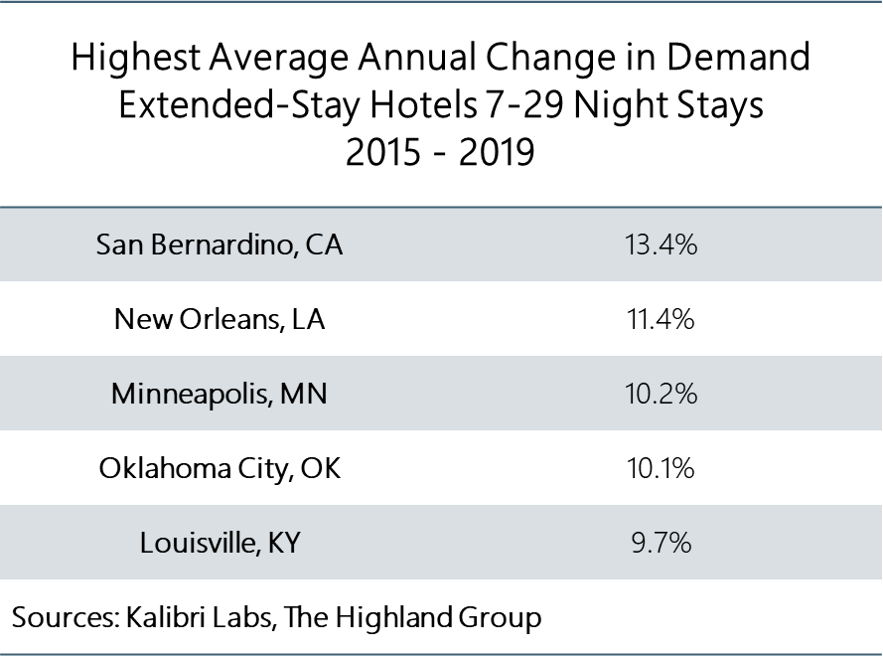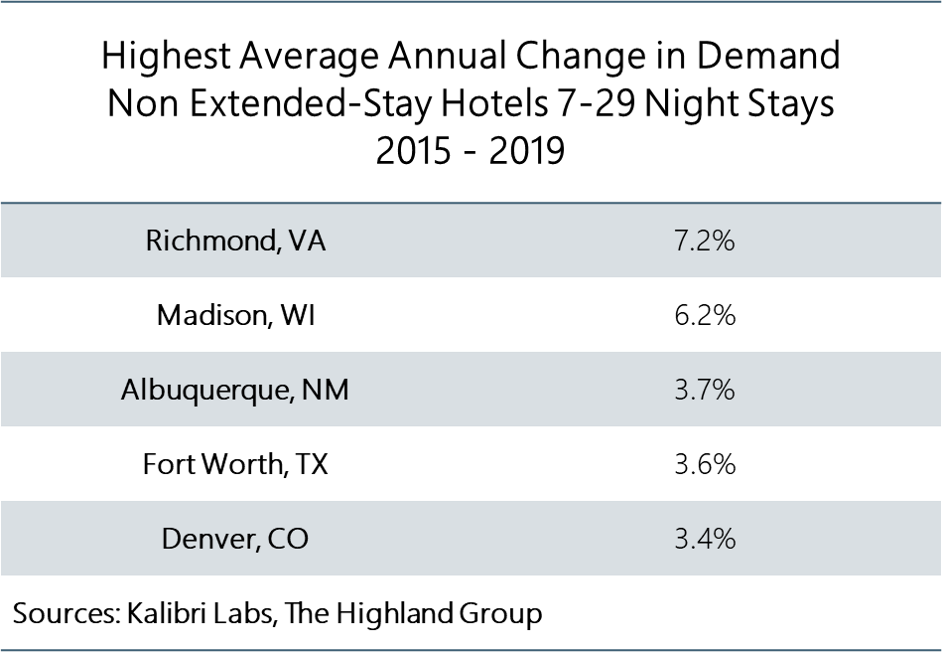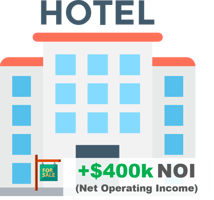By: Jeremy Gilston - Manager, Client Solutions
Blog
When Travel Resumes, Year-End 2019 Extended Stay Development Opportunities Will Likely Remain
By Jason Q. Freed
As the hotel industry has its eyes glued to the latest updates trickling in regarding the COVID-19 pandemic, business still moves on—as best it can. Hoteliers need to be careful not to ignore other data being released that could help in vital decision making when the fog begins to clear. With interest rates at a historic low, many development opportunities will remain viable in the longer term, even with the short-term pause in demand.
Data in a new report, “The 50 Largest Markets: ALOS, ESOC and More Report 2020,” from Kalibri Labs and The Highland Group shows that guests staying seven consecutive nights or longer spent 57% more revenue at traditional hotels than guests at extended-stay hotels. In 2019, Guest Paid room revenue for these guests equaled $7.62 billion at traditional hotels compared to $4.84 billion at extended-stay hotels. Additionally, traditional hotels are hosting 28% more extended-stay room nights than extended-stay hotels.
Those figures might cause extended-stay hoteliers to scratch their heads and ask, “Do traditional hotels have something that my extended-stay hotel doesn’t?” But in terms of demand on a national level, the share of extended-stay demand (ESOC) in extended-stay hotels is 47%. In traditional hotels, ESOC is 11%; however, there are 10 times as many traditional hotel rooms compared to extended-stay hotels.
What’s more, overall demand from extended-stay guests in traditional hotels has decreased from 2015 through 2019, signaling that investors who utilize these KPIs in their site selection strategies are successfully capturing extended-stay demand from traditional hotels:
“The overall decrease in extended-stay demand in traditional hotels is partly due to the relatively high growth in extended-stay supply attracting more guests out of traditional hotels,” says Mark Skinner, partner at The Highland Group.
But to what extent does ADR play a factor in this demand shift? The research shows that extended-stay hotels reported an overall 21% rate discount compared to traditional hotels. This discount is padded by extended-stay hotel’s leaner operating model, making it an attractive investment to many. Breaking this out further, for guests staying 7 to 29 nights and 30-plus nights, the corresponding discounts were 13% and 11%.
“On a national level, extended-stay hotel and traditional hotel RevPAR trends are strongly correlated, so extended-stay hotel discounting of 11% to 13% depending on length of stay seems about right,” Skinner says. “However, much higher and lower discounting in some markets signals an opportunity for improved yield management.”
The Market Story
The report drilled down to look at the 50 largest markets within the United States. From 2015 through 2019, extended-stay demand from guests staying 7 to 29 nights increased greater than 10% annually at extended-stay hotels in four markets, the top 5 of which are outlined below:

“Utilizing these KPIs at the market level will empower an investor to build more cash cows by finding better product-market fits and underwriting assets with more defensible projections.” – Jeremy Gilston, Senior Manager of Client Solutions at Kalibri Labs
Meanwhile, guests staying 7 to 29 nights generated less demand in traditional hotels in 2019 compared to 2015. However, demand increased in 21 markets, the top five of which are outlined below:

“Markets where extended-stay demand grew in traditional hotels tend to be high-growth markets overall, and some were impacted by natural disasters,” Skinner says.
“The 50 Largest Markets: ALOS, ESOC and More Report 2020” is the most comprehensive information available on extended-stay demand, revenues, length of stay, booking lead time and reservation costs. The report may be purchased on The Highland Group’s website. Kalibri Labs’ market area definitions can be found here.




